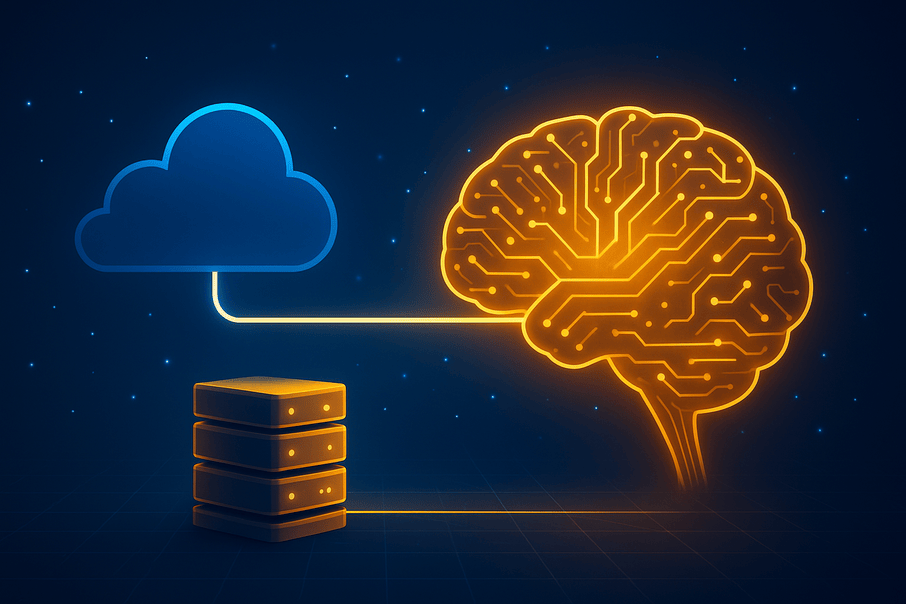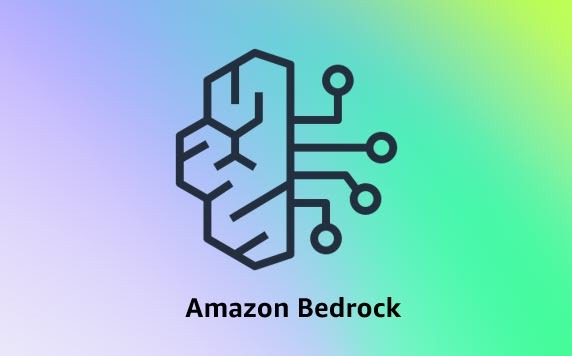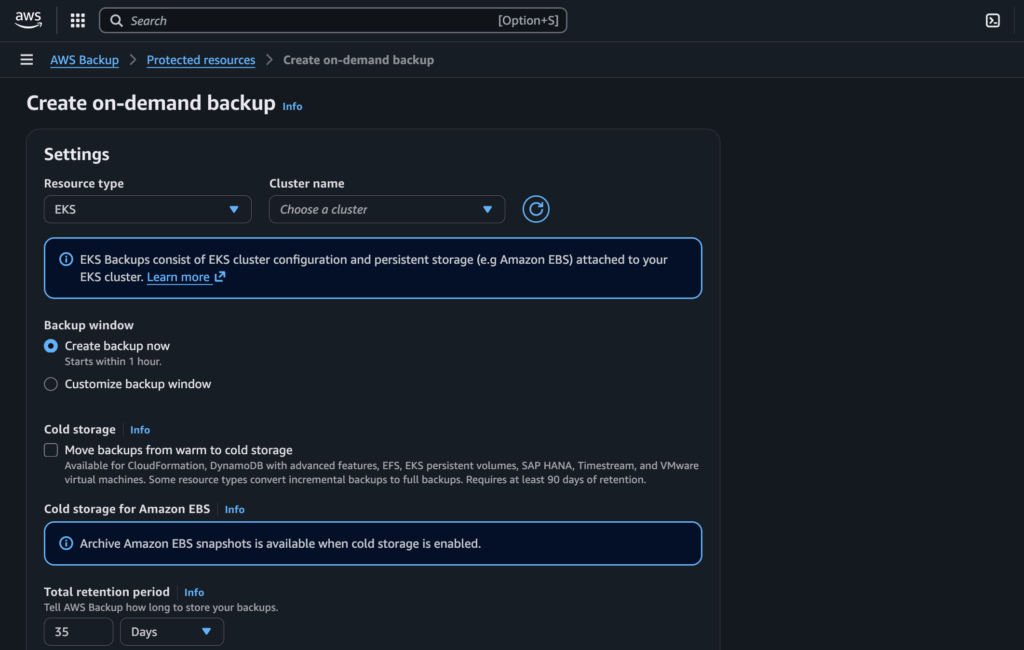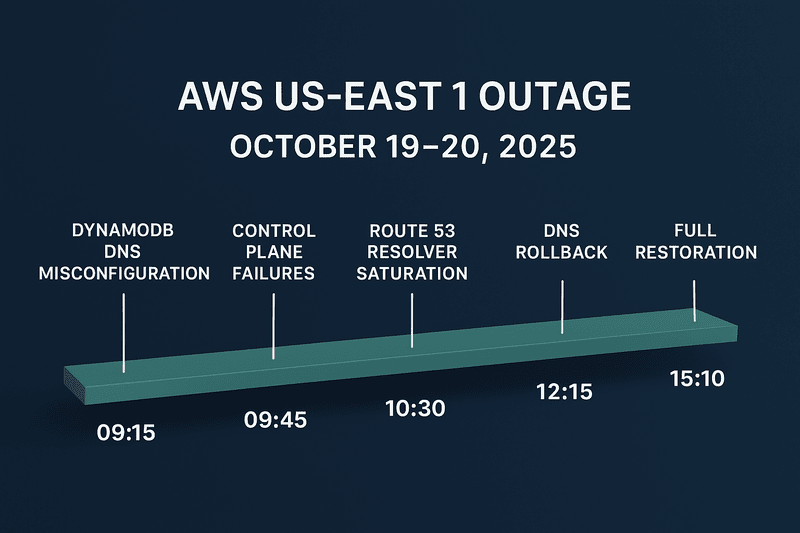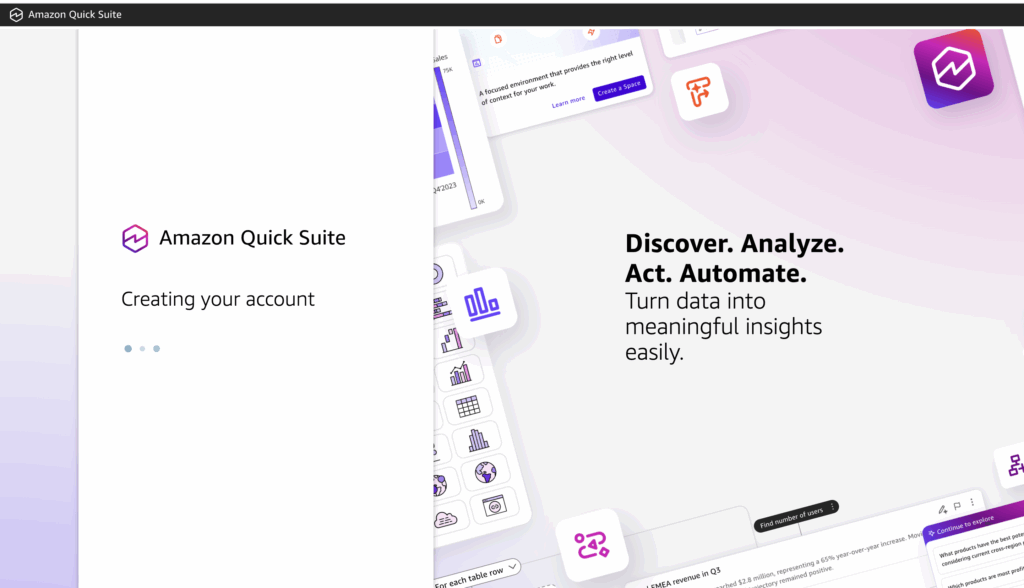Generative AI has changed the way we work, learn, and build businesses. From creating human-like conversations to summarizing research papers and generating code, large language models (LLMs) have become the engine behind a new wave of intelligent automation. Yet, as powerful as these models are, they come with one big limitation: they don’t know everything. Once trained, their knowledge freezes in time. They can’t access your company’s private data, your internal knowledge base, or even the latest news.
That’s where Retrieval-Augmented Generation (RAG) comes in — a method that blends real-time information retrieval with LLM generation to produce grounded, context-aware, and trustworthy outputs.
Thanks to AWS’s AI ecosystem — including Amazon Bedrock, SageMaker, OpenSearch, and Knowledge Bases for Bedrock — building RAG-powered products has never been easier or more scalable. Let’s explore what RAG really means, how it works, and how businesses are using it to move from RAGs to Riches — literally turning information into value.
Understanding Retrieval-Augmented Generation (RAG)
Think of a large language model like a human who has read a million books but doesn’t have internet access. You can ask it almost anything, but it can’t know what’s in your private company wiki or in a report released yesterday.
RAG fixes that by giving the LLM access to a retrieval system — a live, searchable database of relevant knowledge.
Here’s the basic flow:
- Retrieve: When a user asks a question, the system searches a knowledge base (like your company documents or an indexed dataset) to find the most relevant pieces of information.
- Augment: The retrieved passages are added as context to the LLM prompt.
- Generate: The model uses both its internal knowledge and the external information to produce a grounded, accurate answer.
This way, you get the best of both worlds: the creativity and reasoning power of generative AI, plus the precision and freshness of your own data.
Why RAG Matters for Modern AI Applications
LLMs alone are like an encyclopedia: brilliant for general knowledge, but static and limited.
Businesses need AI that is:
- Up-to-date: Accessing the latest data, not what existed at model training time.
- Context-aware: Using private and domain-specific knowledge.
- Trustworthy: Producing verifiable answers grounded in real sources.
That’s exactly what RAG delivers. It bridges the gap between model knowledge and real-world data, enabling organizations to use generative AI safely within their existing knowledge ecosystem.
AWS recognized this need early and designed an ecosystem where companies can easily deploy and scale RAG-based systems — securely, within their cloud infrastructure.
How RAG Works in Practice
Let’s break it down with a practical analogy.
Imagine your AI assistant as a lawyer who’s asked a tough legal question. Instead of relying only on memory, the lawyer walks into the firm’s library, finds the right case files, reads the highlights, and then gives a well-reasoned answer — citing sources.
That’s exactly what happens in a RAG pipeline:
- Document Ingestion and Indexing
- Your data (PDFs, emails, policy documents, transcripts, etc.) is stored in Amazon S3.
- Each document is split into manageable “chunks.”
- AWS uses embedding models (from SageMaker or Bedrock) to convert each chunk into numerical vectors.
- Those vectors are stored in a vector database (like Amazon OpenSearch or Knowledge Bases for Bedrock) where they can be searched semantically.
- Query Processing and Retrieval
- A user sends a query (e.g., “What are the refund policies for damaged goods?”).
- The query is converted into an embedding and compared against the stored vectors.
- The system retrieves the most relevant document chunks.
- Augmentation and Generation
- These retrieved chunks are appended to the prompt and sent to an LLM hosted on Amazon Bedrock (like Anthropic Claude, Meta Llama 3, or Amazon Titan).
- The model generates a context-rich response — often citing the original sources.
- Response Delivery and Feedback
- The result is displayed to the user, with references to source documents for transparency.
- Users can provide feedback, which can be used to improve retrieval accuracy over time.
This process turns static data into a living, searchable knowledge base that empowers the model to reason with your own information.
AWS Building Blocks for RAG
AWS provides everything you need to design and scale RAG-based systems — whether you’re a startup experimenting or an enterprise deploying globally.
1. Amazon Bedrock
Amazon Bedrock is AWS’s fully managed service for building generative AI applications. It gives developers access to a range of top foundation models (like Claude, Mistral, and Titan) through a unified API — with no need to manage infrastructure.
With Knowledge Bases for Bedrock, AWS goes a step further. You can:
- Connect your Bedrock model directly to a data source (like S3).
- Automatically embed and index documents.
- Retrieve and augment context during inference — all managed by AWS.
This means you can build a RAG pipeline without having to manually handle embeddings, vector stores, or search logic.
2. Amazon SageMaker
For teams that need more customization, SageMaker is perfect for:
- Hosting your own embedding or fine-tuned LLMs.
- Building custom pipelines for chunking, vectorization, and indexing.
- Running large-scale experiments for retrieval performance.
You can train domain-specific embedding models — say, for legal, medical, or financial text — improving retrieval accuracy dramatically.
3. Amazon OpenSearch Service
When you want control over your vector store, Amazon OpenSearch is your best friend. It supports vector search, hybrid keyword search, and metadata filtering — allowing you to blend semantic and traditional search.
This is crucial in industries like law or healthcare, where exact terms and context both matter.
4. AWS Lambda, Step Functions, and API Gateway
To orchestrate your pipeline:
- Lambda functions handle lightweight tasks like document chunking, query embedding, and routing.
- Step Functions orchestrate multi-step workflows like ingestion pipelines.
- API Gateway exposes endpoints for your web or mobile application to interact with your AI backend securely.
5. CloudWatch, KMS, and IAM
Finally, AWS’s core platform services ensure that your RAG application is:
- Secure: Encrypted with KMS, isolated within VPC, and governed via IAM roles.
- Observable: Monitored through CloudWatch metrics and logs.
- Scalable: Able to grow effortlessly across multiple users or workloads.
Five Real-World RAG Solutions You Can Build Today
Now that we understand how RAG works, let’s get practical. Here are five real-world problems businesses can solve using RAG-powered solutions — all built with AWS AI services.
1. AI Customer Support Assistants
The Problem:
Customer support teams face thousands of repetitive queries daily. Information is scattered across help centers, internal tools, and FAQs. Agents spend hours finding answers, while customers grow impatient.
The RAG Solution:
Create an AI-powered support assistant that retrieves information from your company’s internal documentation and responds in seconds — with source citations for reliability.
How AWS Fits In:
- Store documentation and support articles in Amazon S3.
- Use Knowledge Bases for Bedrock to ingest and index the documents automatically.
- The model (e.g., Claude or Titan) retrieves relevant passages and generates answers.
- Deploy via API Gateway and integrate with your website or chat app.
- Use CloudWatch and feedback loops to continuously refine performance.
Example Impact:
DoorDash implemented a similar approach with Amazon Bedrock and cut customer handoffs by 49%, improving satisfaction scores dramatically.
Business Opportunity:
Offer this as a white-label SaaS for small businesses — enabling them to add “smart customer chat” to their websites in hours.
2. Legal and Contract Intelligence
The Problem:
Law firms and compliance departments spend enormous time reviewing contracts and regulations. Extracting relevant clauses and identifying risk terms is tedious and error-prone.
The RAG Solution:
Build a Legal Document AI that reads and retrieves similar clauses from past contracts, case law, and internal templates — helping lawyers compare and summarize instantly.
How AWS Fits In:
- Upload legal documents and case law to S3.
- Use SageMaker to train or host a legal-specific embedding model.
- Index clauses into OpenSearch for hybrid search.
- At query time, retrieve the most relevant cases and clauses.
- Use Bedrock (e.g., Claude) to generate a concise legal analysis with references.
Example Use Case:
A law firm could ask: “Show all non-compete clauses that differ from our standard agreement.”
The RAG system instantly returns relevant sections — with highlights and risk commentary.
Business Opportunity:
Turn this into a SaaS tool for legal professionals, charging per user or per contract analysis.
3. Financial Market Research Assistant
The Problem:
Financial analysts must interpret enormous volumes of market data, earnings reports, and news — often under tight deadlines. Traditional search tools can’t handle this complexity.
The RAG Solution:
A Financial Research Copilot that retrieves and synthesizes the latest filings, press releases, and analyst notes to answer complex questions like “What are Tesla’s top revenue risks this quarter?”
How AWS Fits In:
- Ingest SEC filings, quarterly reports, and transcripts into S3.
- Process and embed using SageMaker pipelines.
- Store vectors in OpenSearch or Knowledge Bases for Bedrock.
- Retrieve top-k relevant documents per query.
- Use Bedrock to generate a factual, sourced answer.
Example Impact:
This can help investment teams move from 3 hours of manual reading to 3 minutes of insight generation.
Business Opportunity:
Offer this as a financial intelligence dashboard for asset managers, journalists, or fintech startups.
4. Healthcare Decision Support
The Problem:
Doctors and researchers need to stay updated with vast amounts of medical literature. No human can read it all. Decisions are delayed, and valuable insights get missed.
The RAG Solution:
Build a Clinical Knowledge Assistant that retrieves relevant medical studies and treatment guidelines to support clinical decisions.
How AWS Fits In:
- Store medical research papers and guidelines in S3.
- Use a HIPAA-compliant SageMaker environment for embedding sensitive data.
- Index into OpenSearch.
- Query with anonymized patient data; retrieve similar cases.
- Generate contextual responses via Bedrock, including links to studies.
Example Use Case:
A doctor could ask: “What recent research supports using Drug X for treating Condition Y?”
The RAG system retrieves peer-reviewed studies, summarizes them, and lists references.
Business Opportunity:
Offer it as a subscription tool for hospitals or researchers, or build a healthcare chatbot with verified citations.
5. Enterprise Knowledge and Onboarding Assistant
The Problem:
Employees waste hours searching through wikis, email threads, and Slack messages for company processes. Onboarding new hires is slow and frustrating.
The RAG Solution:
Deploy a Company Knowledge Copilot — a private AI that can instantly answer employee questions based on internal documents.
How AWS Fits In:
- Upload HR, IT, and policy documents into S3.
- Use Knowledge Bases for Bedrock for ingestion and indexing.
- Integrate with Amazon Bedrock and expose via Slack or Teams.
- Add access controls through IAM to ensure sensitive data is restricted.
- Use feedback logs to identify missing or outdated content.
Example Impact:
A new hire can ask, “How do I request leave or expense reimbursement?” and get an accurate, company-specific response — sourced directly from HR documents.
Business Opportunity:
Enterprises pay heavily for productivity and onboarding tools. A RAG-powered internal assistant can be licensed per department or user seat.
Challenges and Best Practices in Building RAG Systems
While RAG is powerful, success depends on doing the fundamentals right. Here’s what you need to know.
1. Chunking and Embeddings
Splitting text incorrectly leads to poor retrieval. Each document chunk should capture a meaningful unit — a paragraph, section, or clause.
Use overlapping windows (e.g. 1000 tokens with 200 overlap) to maintain context.
Use domain-specific embedding models for better vector representation.
2. Balancing Recall and Precision
Retrieving too few chunks leads to incomplete answers; too many cause confusion.
Start with 10–20 top chunks and let your LLM decide relevance dynamically.
Combine vector and keyword search in OpenSearch for hybrid precision.
3. Managing Prompt Size and Context
Large prompts are costly and can exceed model limits.
Use ranking to include only the most relevant pieces.
Structure your prompt clearly, separating “context,” “query,” and “task instructions.”
4. Controlling Hallucinations
Even with RAG, models can fabricate details.
Mitigate this by including explicit instructions like:
“Answer using only the provided context. If unsure, say you don’t know.”
Also, display citations with every answer to enhance transparency.
5. Monitoring and Continuous Improvement
Track metrics like:
- Retrieval latency
- Query success rate
- Hallucination rate
- User feedback
Use AWS CloudWatch to monitor, and feed user feedback into retraining or re-ranking pipelines.
Turning RAG Into a Business Opportunity
RAG isn’t just a technical framework — it’s a new business model. Here’s how you can build real ventures around it.
1. Productize Domain Expertise
If you’re an expert in a field (law, finance, construction, energy), build a RAG-powered assistant that encapsulates your domain’s documentation, regulations, and best practices.
Charge businesses for access to your “domain brain.”
2. Offer RAG as a Service
Provide managed RAG solutions to enterprises that don’t want to handle data ingestion, indexing, and AI infrastructure.
Package it as an API or SaaS offering powered by AWS Bedrock and OpenSearch.
3. Add RAG to Existing Platforms
If you run a productivity app or enterprise tool, RAG can instantly make it smarter.
For example, a document management system can have an “Ask your files” feature that uses Bedrock’s Knowledge Base under the hood.
4. Monetization Models
- Subscription: Pay per seat or per company.
- Usage-based: Pay per query or per 1,000 tokens.
- Hybrid: Base fee + metered API usage.
- Enterprise licensing: For large-scale integrations.
5. Competitive Edge
You can compete on:
- Accuracy: Better retrieval pipelines.
- Compliance: Secure data handling.
- Speed: Optimized inference pipelines.
- Domain depth: Custom embeddings and fine-tuned prompts.
The more proprietary data or specialization you bring, the stronger your moat.
A Reference Architecture for AWS-Based RAG
Here’s what a robust, enterprise-grade RAG solution looks like on AWS:
- Data Layer:
- Raw documents in S3, metadata in DynamoDB.
- EventBridge triggers for new document ingestion.
- Processing Layer:
- Lambda or Step Functions for text cleaning, chunking, and embedding generation.
- Embeddings generated via SageMaker or Bedrock embedding models.
- Storage Layer:
- OpenSearch (vector index) or Bedrock Knowledge Base for retrieval.
- Retrieval and Generation Layer:
- API Gateway receives query → passes to Lambda.
- Lambda performs retrieval, constructs augmented prompt, calls Bedrock LLM.
- Output returned with citations.
- Feedback and Monitoring:
- Logs to CloudWatch.
- Feedback stored in DynamoDB for retraining.
- Security and Governance:
- Encryption with KMS.
- IAM policies for fine-grained access.
- PrivateLink for secure model access within VPC.
This architecture scales globally while staying compliant and cost-efficient.
Conclusion: From RAGs to Riches
Retrieval-Augmented Generation isn’t just an AI technique — it’s a business revolution. It enables companies to turn their private data into intelligent assistants, reduce human workload, and create new value from existing information. AWS has made this journey seamless. Whether through Amazon Bedrock’s managed RAG capabilities, SageMaker’s custom modeling power, or OpenSearch’s scalable vector search, you can build end-to-end AI solutions faster than ever. From intelligent customer support to legal research, finance, healthcare, and enterprise knowledge systems, RAG transforms how organizations think about data and intelligence.
In the coming years, every company will need its own domain-trained, data-grounded AI. The ones who start now — leveraging AWS — will lead the next generation of intelligent businesses.
That’s the true meaning of RAGs to Riches — turning retrieval and reasoning into real-world revenue.

